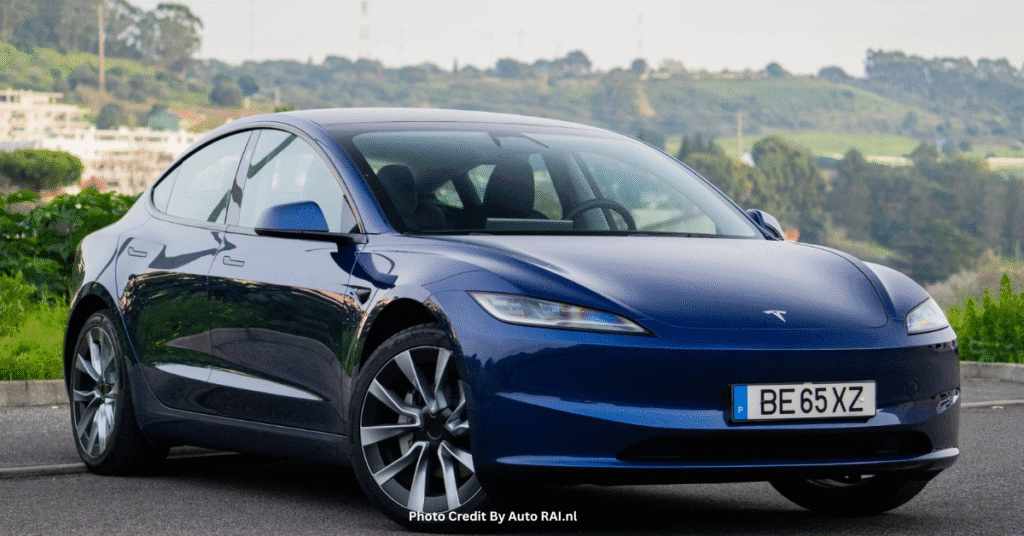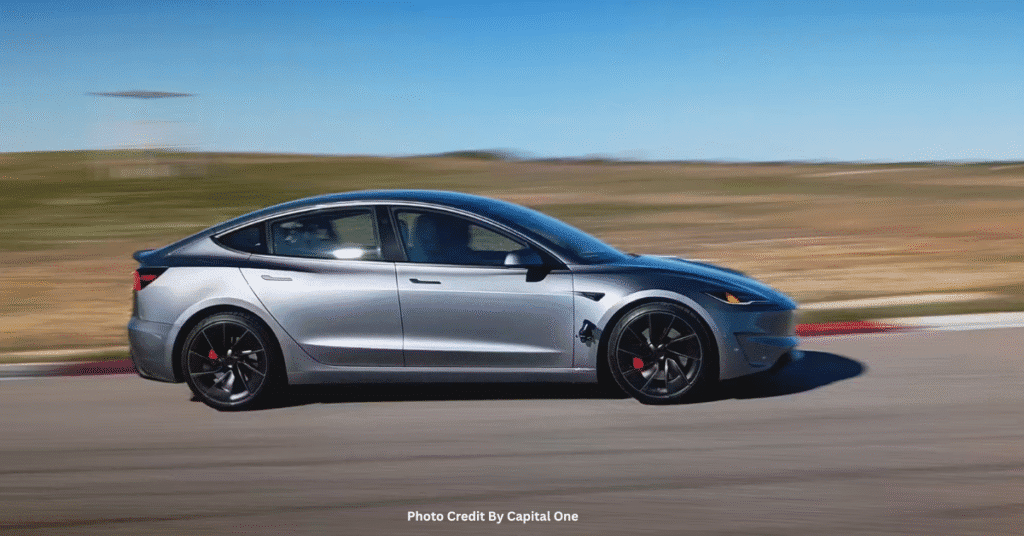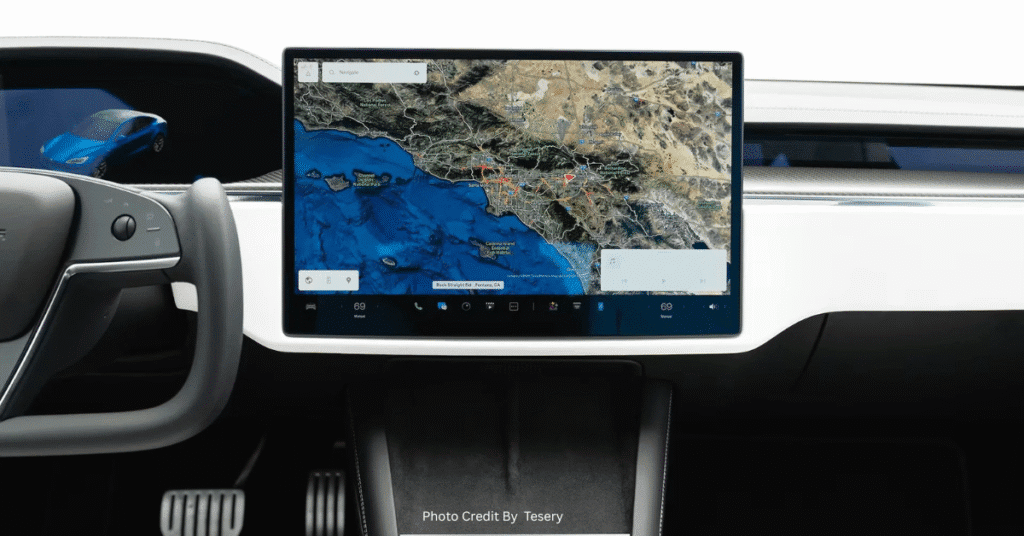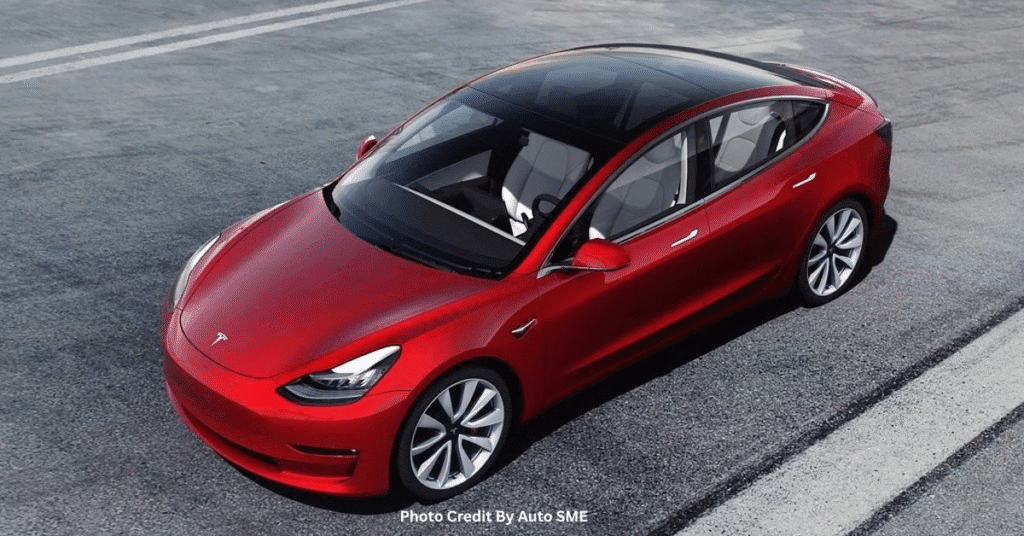Is the Tesla Model 3 still worth it?
This is the Tesla Model 3 and to be honest, it’s getting on a bit now. It was first launched in 2017 back in the US, so why would you buy one of these when you could have a BMW i4, a BYD Seal, or perhaps even the new VW ID.7? All of those are newer models that you might imagine would be even better. Well, that’s what we’re going to be finding out today. For more information, check out the description below. And if any umbrella manufacturer wants to support us as well, that would be very much appreciated because it is currently pouring with rain and I’m getting very wet.

So, as I was saying, the Tesla Model 3 is no spring chicken. It first appeared almost seven years ago, but it has had loads of updates along the way. In the early years, there were facelift changes, there were changes to the interior, there were bigger batteries, and there’s been a near constant stream of over-the-air software updates. At the end of last year, there was a big facelift, which brought the first significant changes to the Model 3’s looks. You’ve now got these slimmer, less bulbous headlights, redesigned tail lights, and there are some new alloy wheel designs. These are the standard 18-inch Photon wheels, but you can pay £1,500 to upgrade to silver 19-inch alloys that have a 10-spoke design. The biggest and definitely the most controversial changes are in there though, and we’re going to be taking a look at those a little bit later on.
But one of the biggest reasons for choosing a Tesla Model 3 is the Supercharging network over any other brand of electric car. These things, of course, are Tesla Supercharger stalls, and there are more than 1,100 of them dotted around more than 115 different locations in the UK. Some of those locations, including this one here in Dorking, are open to non-Tesla EVs, but at the moment that’s a relatively small number, around 30 or so. The process of charging a Tesla is much easier because all you do is plug the car in just like that. Whereas if I were in any other EV, I’d need to first download the Tesla app to my phone, find this location, check the stall number down there, press on that, and only then would charging actually begin. It’s also worth noting that if you’re a Tesla driver, you pay less. So at the moment, it’s off-peak, I’m paying 39p per kilowatt-hour to charge this Tesla Model 3, whereas if I were in a BYD Seal or a BMW i4, I’d either have to pay £10.99 a month to sign up for Supercharger membership to get that rate, or I’d pay 53p per kilowatt-hour as a guest. That’s quite a big difference.

And there’s more because the Tesla Model 3 communicates with the Supercharger network when you drive along. So if I plug a charging location into the satnav, it’ll tell me how many stalls are available there, the price I’ll be paying per kilowatt-hour, and even the percentage of charge that I’ll have left in the battery when I get there. Something we’ve found to be surprisingly accurate. On top of all of that, when I get close to the charger, it’ll start to precondition the battery so when I get there and plug in, I’ll be able to take on charge as quickly as possible. You don’t even have to pick out the Supercharger that you want to use because if I wanted to, say, go to Edinburgh now, I could just plug the address into the satnav, and it would tell me where to stop to get there as quickly and efficiently as possible.
Tesla Model 3 How quickly can it charge?
Well, this is the long-range Tesla Model 3 charging version, and it can accept up to 250 kW of power. That’s a lot. It’s more than an i4, a Seal, or a Polestar 2, and it means a 10 to 80% charge in ideal conditions can take as little as 27 minutes. Now, the rear-wheel-drive version of this car has a lower maximum charging speed of around 170 kW, but because it has a smaller battery, a 10 to 80% charge actually takes slightly less time, around 25 minutes. Although obviously, you’ll gain fewer miles during that time. If you’re charging at home using a 7 kW wallbox, expect to wait 12 hours for a 0 to 100% charge in this long-range version, or about 9 and a quarter hours if you go for the rear-wheel-drive car.

Quick, easy charging is the Tesla Model 3’s new range, obviously a very good thing, but ideally, you want to be stopping as little as possible. So, how does the Tesla Model 3 stack up compared with its new arrivals for range? Well, very well actually. This is the long-range model. It has the longest range of any Tesla Model 3, as you might expect, and its official range is 390 miles. For comparison, the best BYD Seal can do 354 miles, the BMW i4 365 miles, and the VW ID.7 up to 383 miles. In fact, the only direct rival that has a better range than this on paper is the Polestar 2, and that can manage up to 406 miles. Even if you go for the cheaper rear-wheel-drive version of this car, then that has a very competitive range of up to 318 miles.
As for how far you’ll actually be able to get in the real world, well, we actually put this car into our annual winter range test about a week or so ago. We drove it with 11 other EVs from fully charged to completely empty, so the car wouldn’t drive along anymore at all. Far from ideal conditions, about 10°—pretty windy, a lot of standing water on the road, not unlike today really—and it managed 293 miles. Now, for context, the ID.7 did 268 miles, and the Seal 255 miles. In fact, the only car that managed to beat this was the way more expensive Mercedes EQE, and even then, only by 7 miles. In the summer, you can expect around 340 miles from a charge in this long-range version, or if you go for the cheaper rear-wheel-drive, then expect 220 to 270 miles depending on the weather.

So, the Tesla Model 3 can charge quicker than its rivals and it has a longer range than most of them too, and that’s even more impressive when you consider that it has a smaller battery than all of those cars that I just mentioned. The one in this long-range version has a usable capacity of 75 kWh, and if you go for the cheaper rear-wheel-drive version, then that capacity drops to 58.5 kWh. It’s the Tesla Model 3’s incredible efficiency that means it doesn’t need such an enormous battery as its rivals to travel so far down the road, even in the winter. This long-range will do 3.9 miles per kWh easily, which is significantly better than any Seal or ID.7. And in the summer, or if you go for the lighter rear-wheel-drive model, that efficiency will be even better.
Tesla Model 3 infotainment
But is the Tesla Model 3 just about cold hard numbers—spectacular efficiency, fast charging speeds, and a long range? Those things are very important, and they will make your life easier, but they’re not necessarily going to get you excited. Well, the good news is the Tesla Model 3 does have a sense of humor. You can do all sorts of frivolous things using this 15.4-inch infotainment screen here. You can make fart noises, you can play computer games, you can watch Netflix, even make the car do its own light show for you. But it isn’t all about gimmicks because it’s fundamentally a very good infotainment system as well. Yes, in an ideal world, we would prefer a separate rotary controller interface as well as the touchscreen, like you get in a BMW i4, but if you’re going to rely solely on a touchscreen, at least make it a nice big one like this because it means all the icons are spaced out well, rather than being crammed together like they would be on a smaller screen. This screen is also very impressive for clarity and it responds incredibly quickly too. There’s barely any delay at all between me pressing an icon and anything actually happening.

It isn’t all good news though because the Tesla Model 3 isn’t available with smartphone mirroring at all, so I can’t use Apple CarPlay or Android Auto to mirror certain apps like Waze, for example, onto the infotainment screen here. But it’s a relatively small complaint because this system is so good. There are some apps on here, like Spotify, for example, and the satnav is actually based on Google Maps, so it’s very good at picking routes and diverting you around traffic. And as I mentioned earlier, it is of course permanently linked to the Supercharger network as well.
There are some bigger problems though. So, we’ve always complained that it’s a little bit fiddly to adjust the door mirrors and the steering wheel in a Tesla Model 3 because first, you have to go into the touchscreen here, tell the car that’s what you want to do, and then fiddle around with these tiny scroll wheels on the steering wheel there. But at least that’s something you’re not going to be doing very often. If someone else has been driving, you can recall your own settings by pressing an icon here on the touchscreen.
The bigger problem is that now, since the facelift, you have to use the touchscreen to engage a gear. So, you swipe up here to go forward and swipe back to hit reverse, and that is just a bit annoying. You can also use this touchpad up






